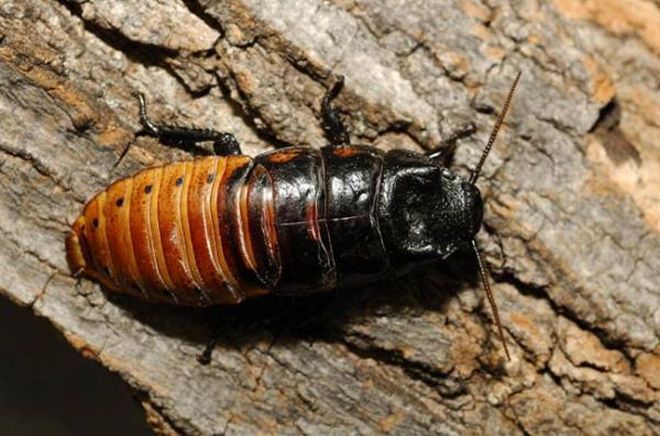'Lover' Cockroaches Grow Bigger Testicles to Woo Mates

Cockroaches are known for their superior survival skills, but it seems these bugs have another evolutionary advantage when it comes to the mating game: Male roaches can grow bigger testicles, if need be, to woo a mate.
A new study finds that Madagascar hissing cockroaches can adopt different strategies to win females, either evolving as a "lover" with bigger testes or a "fighter" with larger horns.
Roaches compete for females in various ways, with two main approaches being to defend a female by force, or to sneak past larger males to mate. Based on these two strategies, the researchers think that males from two species of giant cockroaches from Madagascar evolved different physical characteristics based on their tactics for winning a female. [Gallery: Out-of-This-World Images of Insects]
"These cockroaches are acting like red deer in the rut, competing for females by combat, but if they don't have the size and strength to win fights outright, they can try and sneak mates," study lead author Kate Durrant, a behavioral ecologist at the University of Nottingham in the United Kingdom, said in a statement. "A male cockroach seems to be adapted to be either a lover or a fighter, and what's interesting is that they do this before they become fully adult, at the final moult."
Durrant and her colleagues used 3D-scanning technology to precisely measure males from two different types of giant hissing cockroach species: the flat-horned cockroach, Aeluropoda insignis, and the wide-horned cockroach, Gromphadorhina oblongonota. The high-resolution X-ray computed tomography (CT) scans allowed the researchers to determine each roach's body length, body volume and the size of their "horns."
These body measurements were then compared to the cockroaches' aggression levels when fighting rival males, and the size of their testes — a sign that the roaches have more of an investment in mating.
The researchers found that the flat-horned cockroach, which is small, with short horns, was nonaggressive and had large testes. These "lover" roaches were more likely to avoid fighting by mating with females behind the backs of larger males. Wide-horned cockroaches, in contrast, were larger and heavily armored with big horns, but with smaller testes — "fighter" roaches.
Sign up for the Live Science daily newsletter now
Get the world’s most fascinating discoveries delivered straight to your inbox.
"These observations support sperm competition theoretical predictions but require field observations of natural mating systems in these relatively poorly known organisms for confirmation," the researchers conclude in the study.
The trade-off between lover and fighter strategies is also seen within each cockroach species, the researchers reported in the study. In other words, individual males with smaller horns typically had larger testes to compensate, the scientists said.
The study was published online Nov. 7 in the journal Scientific Reports.
Original article on Live Science.











